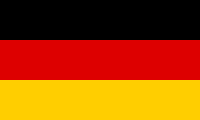LuckySweeper Help
Objective of the Game
Mines are hidden beneath many of the squares. The objective of the game is to uncover all the unmined squares, without tripping a mine.
You get hints on the location of the mines. Every uncovered square shows the number of mines located in the eight adjacent squares. Often, you can draw conclusions on the arrangement of the mines. In addition, the number of mines not yet marked is shown.
Usage
Clicking with the left mouse button uncovers a square. Right clicking [Alt] an uncovered square marks it, protecting it from accidentally being uncovered. Use this mark on squares where you expect a mine to be hidden. Clicking with the right mouse button another once removes an erroneous mark again. When you have marked all the mines adjacent to an uncovered squares, you can uncover the remaining squares by clicking with both buttons simultaneously [Ctrl]. (Alternatively, keep the keys denoted in square brackets pressed while clicking.)
"New Game" starts a new game. Use it if you have tripped a mine or if you have given up.
Highscore
The time you need to solve the puzzle is taken. If you are good enough you may enter your name into the highscore list.
Helpers
To learn the game or to inspect difficult situations, the app features several helpers. Clicking "Play" makes the computer solve the problem for you. It does not use any internal information for this task, but draws only conclusions that are also open to a human player. Normally, this takes only seconds, in unlikely, difficult scenarios you might have to wait for several minutes.
Clicking "Next Step" or "Next 10 Steps" lets you observe the solution step by step, "Hint" makes the program show the squares for which you can conclude reliably whether there is a mine or not. Using the checkbox in front of "Show Mines" you can make the computer show you all the mines.
If you use any of the helpers you will not be eligible for an entry in the highscore list, of course.
If you trip a mine you have lost the game. All the squares that you could have marked (red) or safely discovered (green) are shown, as well as the positions of all the mines. Mines which you have marked correctly are shown in red, the others colored yellow. If there are still flags left, those must have been wrong.
Ambiguous Situations
There are situations, in particular at the beginning and towards the end of the game, where you cannot draw clear conclusions. In this case, you must guess where there is no mine. The specific features of this implementation is that you will be automatically lucky (almost) always. The program detects such a situation and unnoticably moves a mine to another place if you happen to hit. You will be informed about that by displaying "You were lucky!" in the status bar. But take care. You must not start guessing when there there are still squares to discover anywhere on the field. Therefore, postpone those squares until nothing else goes any more. In some cases, you might be disappointed by your personal skill of deduction because there are extremely tricky configurations which only the computer is capable solving.
Because the ambiguity detection process can be very compute-intensive, the program gives up after a certain time span to avoid delaying the game too long. In this case, you have bad luck, anyway. But this should happen much more rarely than just an ambiguous situation. In total, even in expert level, you can solve almost all of the puzzles, which is much more than about 11% when actually having guess. This way, the built-in computer player solves about 97% of the games. For the simpler levels, even better numbers can be reported.
Statistics for the computer player
| Level | Solved Games |
|---|---|
| Beginner | 98% |
| Intermediate | 97% |
| Expert | 97% |
| Guru | 99% |
Nobody keeps you from playing just as well!
Have fun!

